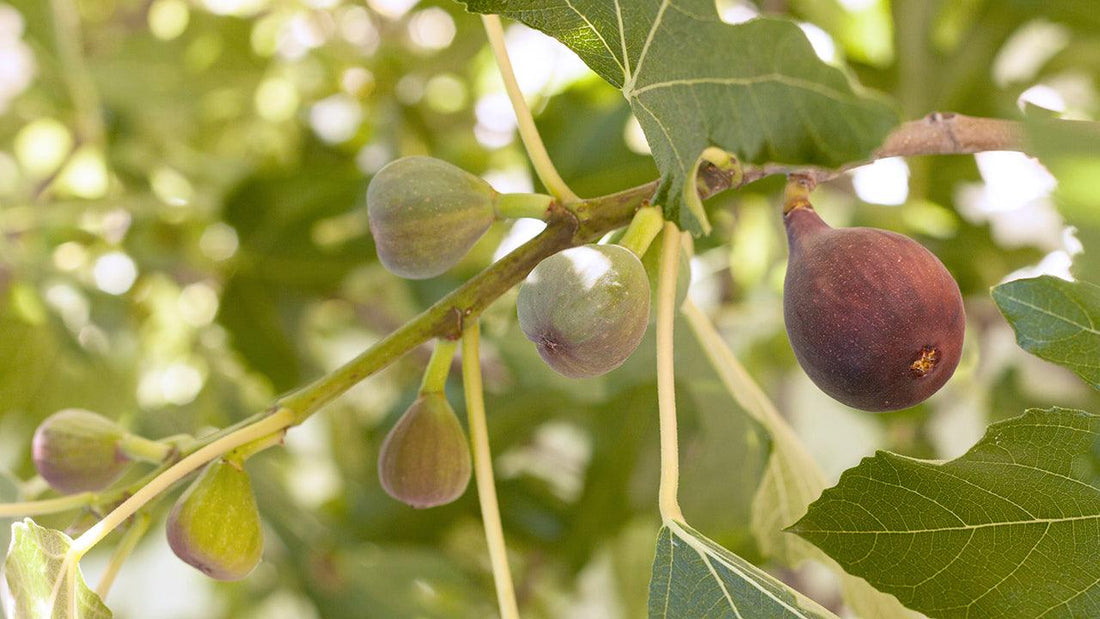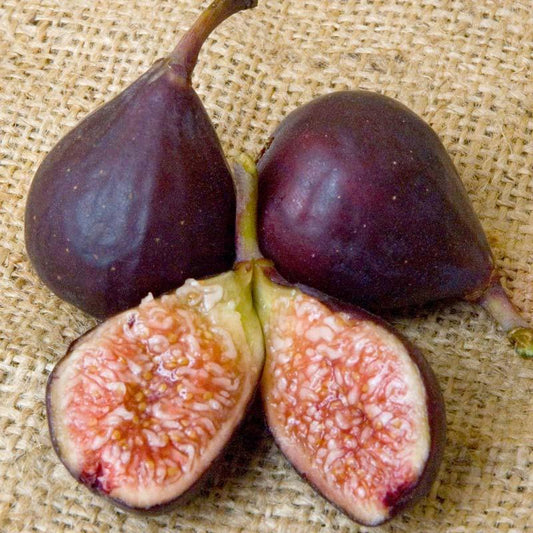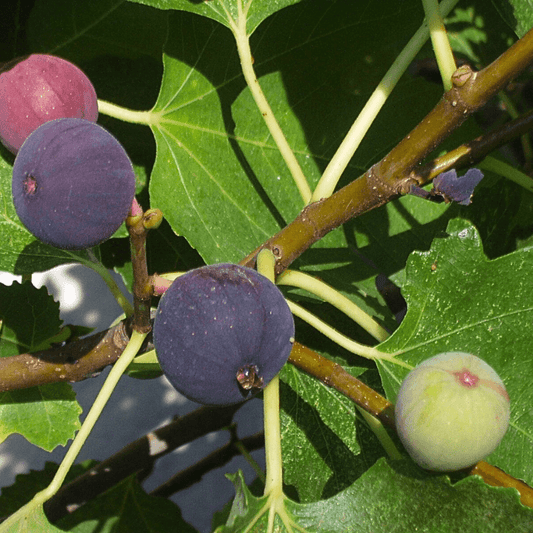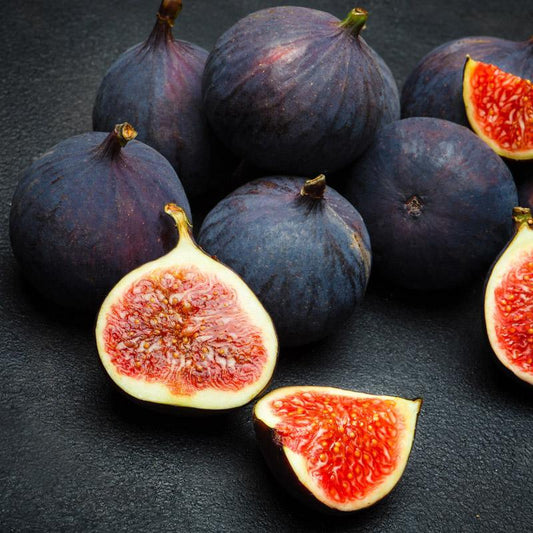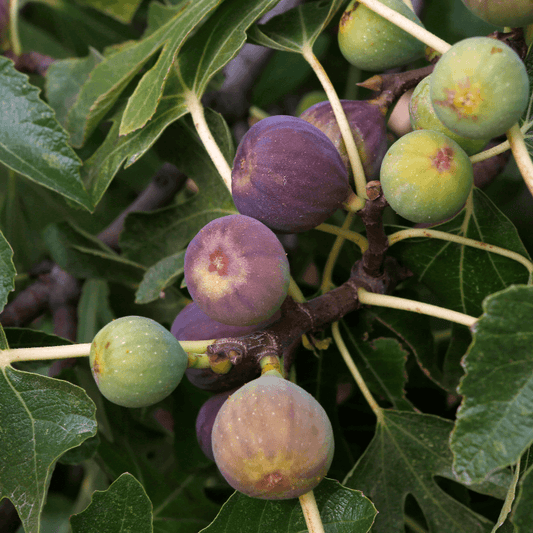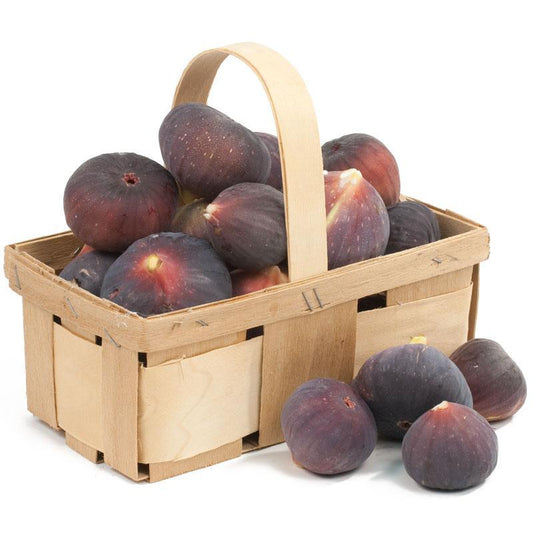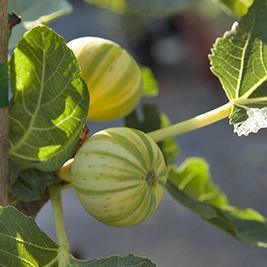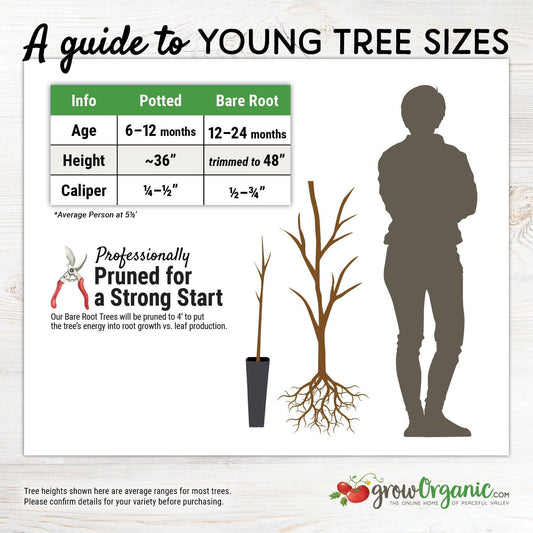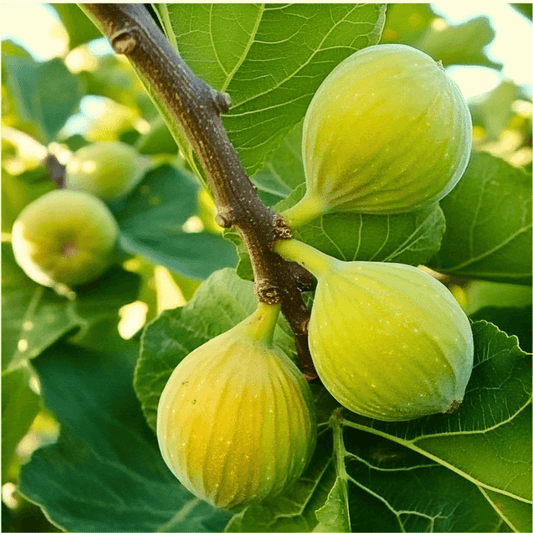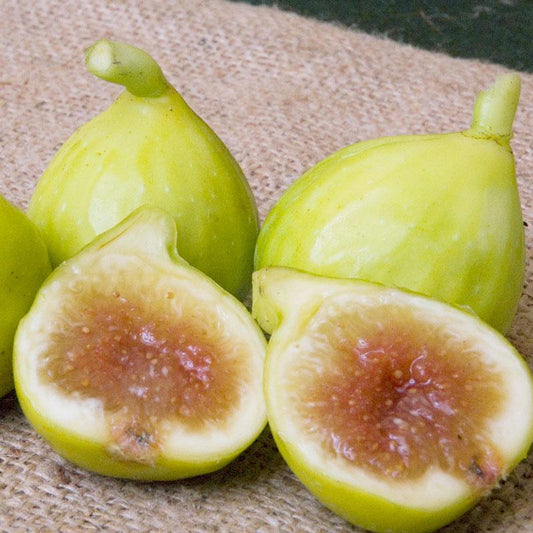Receiving Your Fig Trees
When you receive your fig trees they will be boxed securely. If you are not ready to plant you figs or if the temperatures are too cold, immediately place them in a sheltered location, safe from frost. A root cellar, basement, or garage works well. It’s important choose a place where the temperature stays between 38°F and 45°F. This is important so the fig's roots won't freeze and the tree doesn't break dormancy if it is too warm. It is essential that the young tree roots have plenty of time to become established before the tree begins its spring limb growth and bud break.
Planting

Figs should be planted after all danger of frost has passed. Once established, trees damaged by winter temperatures will most often re-establish from the root once conditions warrant. Unseasonably warm winter temperatures may also cause early bud break which can then freeze and cause damage to the tree.
Figs require well drained soils with plenty of organic matter added prior to planting. They tolerate a pH range of 5.5 to 8, but ultimately thrive in the 6–6.5 range. Their location should be situated at least 20 feet from buildings or other trees. They should be given a sunny location that is free of wind issues.
Fig trees do not like their roots disturbed, so don’t loosen the soil around their roots. Do not amend the planting hole when planting figs. If amendment is necessary, try to do it before the tree is planted and only around the planting site, not in the hole.
If gophers are a problem in your area, a wire gopher basket should be placed in the hole. This is especially important for fig trees, which are a favorite of gophers. Gophers are less of a threat to mature trees, but this protection could mean the difference between life and death for a young tree.
Two more factors must be considered before planting: wind and sun. If high winds will be a factor in your planting location, then the tree should be tilted slightly towards the wind’s prevailing direction. Do not overdo it, a slight tilt will suffice. To prevent sun damage to your new tree consider using white Spiral Tree Guards. Tree guards are preferred for fig trees to protect them from rabbit or ground squirrel damage.
Dig a hole twice as deep as the root system and two to three times as wide as the root system. Current research indicates that a saucer shaped hole with sides that slope gently upward, the same depth and three times the width of the root system stimulates the most root growth. Figs should be planted at the same depth as they were in the pot.
Backfill with the soil. Lightly compact the backfill with your hand, adjusting the tree gently so that the backfill reaches the original planting depth. The back fill should slope gently up so the crown of the tree is slightly higher than the surrounding soil, this will help prevent crown rot.
Water the tree thoroughly and watch for settling. If undue settling occurs, elevate the tree very slightly to raise its height and release any subsoil air pockets. Figs like to be mulched, mulch them well and make sure the mulch starts 4–6” away from the trunk of the tree and extends a couple of feet past the canopy.
Fertility
Figs require little amendment. If they have less than one foot of new growth, add nitrogen at bud swell the following spring. Liquid Kelp given as a foliar spray monthly during the growing season is beneficial.
Ongoing Tree Care

Staking may be necessary but should be done carefully. A young tree that struggles a little against the wind, without being blown over, develops tissue in its trunk that will strengthen the tree as it matures. Tightly staked trees that do not develop this tissue are at greater risk of wind damage as they grow older. Staking should provide emergency assistance to a young tree, but should not interfere with its natural capacity to resist wind.
To properly stake your tree, drive two sturdy poles deeply into the ground on opposite sides of the tree from each other. The two poles and the tree should demarcate a straight line directly into the prevailing wind. Using a plastic tie or cord attached securely to each pole, create a loose harness that will allow the tree sufficient movement in the wind at least a few inches in all directions. If rain is not timely, then occasional watering will be necessary.
Over-watering can kill young trees. Moist, workable soil is sufficient; soggy soil is dangerous and often fatal. As the tree matures, you will want to water deeply but infrequently; commercial orchardists water for more than 12 hours at a time, but sometimes only two or three times during a season. Do not prune fig trees heavily.
Spraying fruit trees during the dormant season is an important preventative to many diseases and pest problems. Traditionally fruit trees are sprayed three times a year: at leaf drop (Thanksgiving), during full dormancy (New Year’s) and at bud swell (Valentine’s Day). Check out our selection of natural and organic dormant sprays.
Container Growing
Black Jack, Tiger Panache and Violette de Bordeaux figs are well suited to growing in containers. This allows you to grow these fruits in climates that are otherwise too cold or in small spaces.
Transplant the young tree into a 20” pot. To ensure that your tree’s roots do not get too hot, a smart pot (a 15 gallon Smart Pot is a perfect first container size) or a light-colored plastic pot are recommended containers. Ceramic is also highly suitable but can make transplanting difficult, however in areas with high winds the heaviness of the container will prevent the tree from blowing over. Another option in a high wind area or for more decorative appeal is to use a heavy cachepot over a smart pot or plastic pot.
Use a light potting soil that is not overly rich in nutrients. Figs do not like to be fertilized in their first year. Re-pot your container fruit trees every 3–5 years. For the first re-potting you may want to move the tree from a 20” pot to a 24” pot. Replace a third of the soil each time you re-pot.
Water the trees regularly. Figs will drop their leaves if they do not receive adequate water. Drought stressed trees will not produce fruit. Fertilize them in spring after their first year of growing with an organic fertilizer that is lower in nitrogen and high in phosphorus, potassium and calcium.
If you will be taking your tree inside for the winter wait until the tree is fully dormant, then bring the tree into a shed or garage where it will be cool but sheltered. The temperature should not be consistently above 45°F or dip below 15–18°F. If the temperature in an unheated garage or outbuilding will dip below 15–18°F it is recommended you wrap the tree in a frost blanket. Water the tree lightly once a month to prevent the soil from becoming dry and powdery. Once the tree breaks dormancy in the spring, bring it out immediately.
Fig Tree Resource Center
Planting & Care Essentials
-
Guide to Planting of and Care for Fig Trees
In-depth advice on planting techniques, soil preparation, watering routines, and general maintenance. -
Figs Growing Guide
A comprehensive handbook for successful fig cultivation, from site selection to harvest.
Protection & Techniques
-
Deer‑Resistant Vegetables and Berries for Your Garden
Effective companion plants that help protect your fig trees from deer and wildlife. -
Planting a Potted Fruit Tree (Video)
A visual guide that shows proper techniques for planting fruit trees in containers—a helpful resource for potted figs.
Shop & Source
-
Fig Trees (Available for purchase)
Explore a curated selection of fig trees ready for planting—perfect for both garden and pots.

